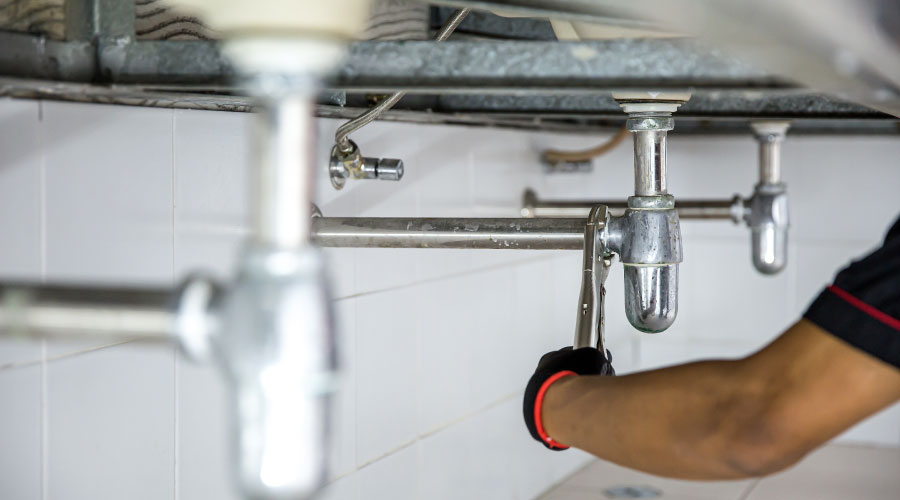Five Design Features of Tomorrow’s Restrooms
Cleanliness, conservation, inclusivity, and other trends will influence future restroom design.
Public restrooms pose a distinct challenge that embodies the essential goal of design: to create functional spaces without sacrificing aesthetic quality. COVID-19 has accelerated the advancement of public restroom design across market sectors. Public expectations for sanitation in facilities are at an all-time high, and customers are increasingly looking for a positive restroom experience. Functional components of hygiene, cleanability, and conservation of resources remain primary concerns, tempered by our innate need to be surrounded by aesthetically pleasing design.
The trend of touchless technology will continue to be the primary arbiter of change. Sensor-activated faucets came into prominence in the early 1980s, and have proven to be one of the most important and lasting innovations in restroom design. Fixtures continued to improve over the decades, in terms of reliability, cost and efficiency.
The newest touchless fixture solutions combine faucet, dryer, and soap dispensers with trough style sinks. Safety and appearance retention are the primary goals of these combination style units. Because hand washing and drying occur in the same space, water spillage on the floor is limited, mitigating slip and fall conditions. Deeper sinks can also enable greater splash control.
Conservation has become a major consideration in the design of public restrooms. For example, hand dryers are not only convenient but reduce paper towel waste. An increased focus on resource conservation, coupled with the popularity of touchless combination units led to the development of waterless urinals in the 1990s. In light of the pandemic, as more customers and guests are keen on cleanliness, the use of waterless urinals will inevitably expand.
While waterless urinals are common in high throughput public facilities such as stadiums and highway rest stops, waterless toilets have not yet become mainstream. These devices greatly reduce the spread of bacteria, as users do not need to touch the device due to the lack of a flushing requirement. Currently an outlier, the waterless or composting toilet was featured prominently by the Bill and Melinda Gates foundation in the Netflix movie “Inside Bill’s Brain: Decoding Bill Gates.” The foundation sponsored a competition that addressed the need for sanitary waste disposal in third world countries. Today, compost toilets are used by RV users and homeowners in rural areas. While these systems target residential use in rural areas, where water and sewer hook-ups are expensive and less common, the same technology could be applied to higher capacity public restrooms in the future. The increasing price of water will drive acceptance of these new approaches. As water continues to be a scarce resource in many regions, and water futures are being traded on the Chicago Mercantile Exchange, the transition to waterless technology for commercial use seems highly probable over the next 10 years.
Touchless fixtures help create a cleaner restroom by managing stock and having fewer touchpoints to disinfect. Similarly, waterless urinals help reduce odor complaints. Maintenance labor costs remain a primary concern for public restroom owners, as demands for wage increases and wage parity become increasingly prominent in our current socio-political environment. Thus, the need for easily cleanable fixtures and materials will continue to grow.
Over 13 years ago, in 2008, leading surveys conducted by Airport Interviewing and Research Inc. determined several important factors that contributed to a customer’s idea of a “perfect restroom.” Top findings included concerns about cleanliness, privacy, security of personal belongings, and convenience in terms of amenities and proximity. So how can we help to someday achieve the “perfect restroom?” As with any long-lasting change, interim steps are fundamental to success. A step-by-step process needs to be in place to allow facilities managers to plan their budgets to reach these goals.
Motion sensors are a proven technology that can be extended beyond motion-activated light switches. Many of the problems in communal bathrooms involve the spreading of germs via flushing, which creates an airborne dispersal of germs called a toilet plume. Sensors can activate lid closure prior to automatic flushing, which will alleviate this problem. New sensor technology has actually lowered the cost of high-efficiency flush valves. These valves will consistently deliver lower amounts of water over the product’s lifespan. As valves are replaced, water usage will go down and resource conservation will increase.
By shifting to single-user, gender-neutral restrooms we can better manage toilet plumes and make restrooms more personal, inclusive, and less institutionalized. The single-user restroom also limits noise and provides a larger stall with better ventilation. The success of family and gender-neutral restrooms in the aviation marketplace signals that the larger public is embracing the idea. A number of hybrid restroom designs have been created to address privacy issues. In 2018, MSP rolled out restroom innovations across its airport that provided larger stalls, and floor-to-ceiling dividers with doors, all within the context of a conventional restroom. This hybrid approach meets the requirement for fixture counts yet maintains the enhanced features of a privatized room. Architects of public restrooms also need to be mindful of inclusivity and accessibility, and work to reconsider how to design restrooms that meet ADA requirements.
The future of public restroom design will be determined through a combination of processes: analyzing user needs; applying state-of-the-art technology to address resource conservation, safety, and cleanliness; and efficient planning with regards to privacy, accessibility, and inclusivity. When combined with a considered use of materials and fixtures for appearance retention and cleanability, these factors will deeply improve the customer experience across market sectors.
Rick Marencic, IIDA NCIDQ, is design principal and studio leader for JCJ Architecture.
Related Topics:












